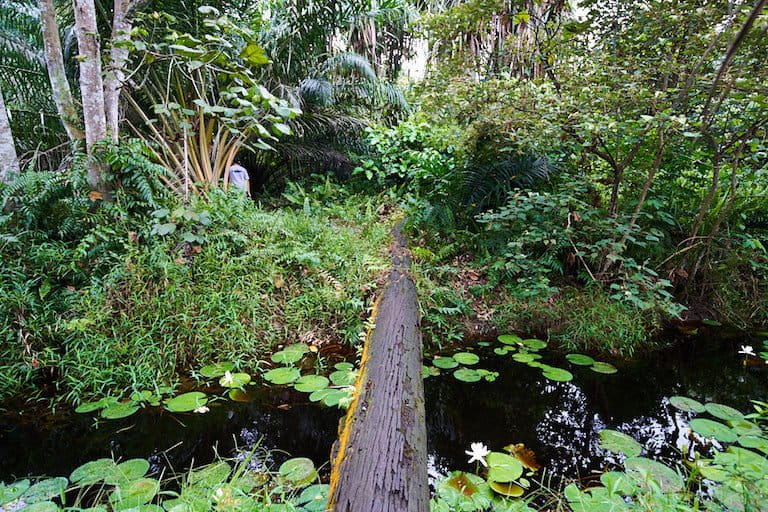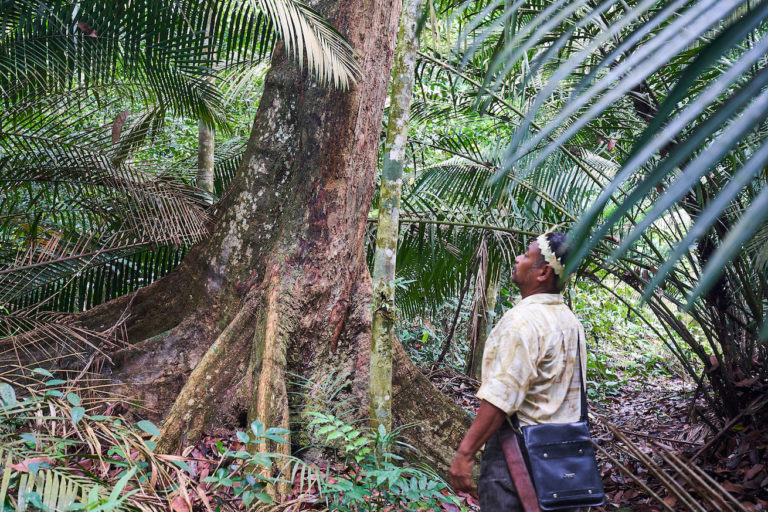- The government of Malaysia’s Selangor state appears intent on rescinding protected status for the remnants of a once-sprawling peat forest that’s home to Indigenous people and threatened wildlife.
- It wants to allow a “mixed development project” on 931 hectares (2,300 acres) of the Kuala Langat North Forest Reserve (KLNFR), which has drawn widespread opposition from Indigenous people, environmental organizations, and a former environment minister.
- Environmental activists point to prevailing regulations that they say should shield the area from being degazetted, but state laws largely favor the powerful leader of Selangor, Amirudin Shari.
- As chief minister, Shari heads both the state government and the board of one of the companies pushing for the development project, and has so far stood his ground against critics of the plan.
Selangor, on the western coast of peninsular Malaysia is the country’s most populous and prosperous state as well as one of its most highly urbanized. Amid this sprawl, just 25 kilometers (15 miles) south of central Kuala Lumpur, lies the Kuala Langat North Forest Reserve (KLNFR), a rich peatland forest home to more than 2,000 Indigenous people as well as rare species like the meranti bunga hardwood tree, the Malayan sun bear and Langat red fighting fish.
Originally gazetted as a customary forest reserve in 1927, the KLNFR area covered at least 7,000 hectares (17,300 acres) at the time. Despite this protected status, urban development projects have diminished the original forest cover by 90%.
Now, the Selangor state government has put much of the remaining forest in the crosshairs.
In February 2020, the Selangor Forest Department placed notices in local newspapers announcing its intention to degazette 931 hectares (2,300 acres) of what remains of the KLNFR, to allow a “mixed development project.”
Two companies had submitted proposals for the site: the state-run Menteri Besar Incorporation (MBI) along with a private real estate firm, Titian Jutaria.
The plan drew immediate criticism from local Indigenous people, environmental organizations and political figures, including Xavier Jayakumar, Malaysia’s minister for water, land and natural resources from 2018-2020, and currently a member of the national parliament.
Petitions against the plan to strip protections for the forest have gathered more than 100,000 signatures.
While the full details of the planned development project remain unknown, the Selangor state government has defended the degazetting of the site. Amirudin Shari, the state’s chief minister, equivalent to a governor, said the development is needed to reduce and prevent forest fires. Shari also said the reserve has been so degraded that it should no longer be defined and protected as virgin forest.
A year later, despite a sustained protest campaign, Shari remains committed to the project. As chief minister, he also chairs the board of directors of MBI, the company pushing for the development project.

State powers trump central government
Due to Malaysia’s legal framework, even powerful figures in the federal government don’t have the authority to veto the Selangor state government’s decision to remove the forest’s protected status.
Malaysia’s Constitution grants sweeping authority over land, agriculture, forestry and water to state governments and their chief ministers. This includes cases that concern Indigenous peoples’ land rights. A 2013 inquiry by Malaysia’s National Human Rights Commission (Suhakam) found that between 1990 and 2010, the amount of land gazetted as Indigenous (“Orang Asli” in Malaysian) reserves in Peninsular Malaysia increased by just 3.87 hectares (9.6 acres). This patterns holds true in the Kuala Langkat forest, too. In 2017, the Department of Orang Asli Development (JAKOA), a federal agency, applied to gazette the KLNFR as an Orang Asli Settlement, but has been unable to overrule the state’s decision to open the land for development.
There are some bounds on state officials’ authority. For example, state regulations, including Selangor’s public inquiry rules of 2014, require that degazettement notices be published publicly, and that concerned stakeholders be given the opportunity to voice their concerns in a town hall meeting.
In the case of the Kuala Langat forest, the response to this public notice was vast and swift. Activists reported collecting more than 43,000 letters and signatures of objection within a month.
In turn, the state government organized a town hall meeting held at a high-end resort, Amverton Cove, at 8 a.m. on Sept. 29, a Tuesday. The fact that it was held on a working day, with Indigenous community leaders given just one day’s notice, drew criticism. Yet despite these obstacles, around 100 Orang Asli and environmentalists made it to the meeting to express their objections.

State officials who wish to strip protections from forests are also bound by a provision in the 1984 National Forestry Act, which says they can degazette protected areas for economic purposes, but must compensate by extending protection to an equal area of forest elsewhere. Selangor officials said in March 2020 that they had identified three suitable sites within the state that could be protected to compensation for the loss of land within the KLNFR.
However, Ili Nadiah Dzulfakar, a longtime activist and co-founder of KLIMA Action Malaysia (KAMY) and the Coalition for the Defense of the Kuala Langat Utara Forest Reserve (PHSKLU), notes that 404 hectares (998 acres) of land within the KLNFR were already promised to Temuan tribespeople in 1993, when the government evicted them to build a highway to Kuala Lumpur International Airport. Since then, they have received 6.5 million ringgit ($1.6 million) in compensation, but no land.
“If the community is asked to agree to the degazettement in return for more land under a false promise, it’s clear that the government is making victims of the Orang Asli,” Dzulfakar said.
Ahmed Ismail, president of the Malaysian Nature Society (MNS), called for everyone to turn their attention to the requirements set forth in the Selangor government’s 2035 State Structure Plan when it comes to degazetting virgin forest.
In that plan, he said, it is “crystal clear” that 32% of the state’s forest area should be preserved, particularly sites like the KLNFR that are identified as “Level 1” environmentally sensitive areas in which development is prohibited.

Political influence
Despite widespread resistance to plans to raze the forest, activists say opposition is stymied, largely due to the power and influence wielded by the companies seeking the development contract: MBI and Titian Jutiara.
Dzulfakar said state-owned MBI wields great influence over planning decisions, with its main undertaking being to boost state revenue by selling land to potential buyers.
Titian Jutiara, meanwhile, is linked to Selangor’s royal family. Company registration documents list two royals among Titian Jutiara’s directors: Tengku Amir Shah, Selangor’s crown prince, and his cousin, Syed Budriz Putra Jamulullail.
Though Malaysia is officially a constitutional monarchy, each state’s royal family remains vastly influential at the state level. In addition, Malaysia upholds a de facto royal immunity system, prohibiting censure against the monarchy.
There are, however, crosscurrents within Selangor state’s political leadership. In November 2020, the Selangor State Assembly unanimously passed a motion to offer official protection to gazetted forest reserves, with a large number of parliamentarians calling out the moral and legal responsibilities of MBI and the state government.
“We have to wait and see what the final verdict is, but it’s still an uphill battle for us to inform and pressure chief minister Shari to withdraw the proposal by providing evidence-based assessments,” Dzulfakar said.
The fate of the KLNFR, portfolio of land development and natural resources management lie squarely in the hands of Shari, who heads both the Selangor government and the MBI board. Tens of thousands of his constituents are now clamoring in support of the 8,000-year-old peat swamp forest, holding out hope for a legal victory in favor of environmental and Indigenous rights.
Correction: This article was amended April 5 to correct the location of the Sept. 29 town hall meeting.
FEEDBACK: Use this form to send a message to the author of this post. If you want to post a public comment, you can do that at the bottom of the page.